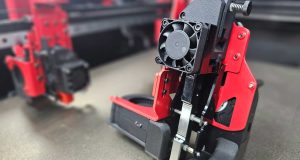The NESSIE research project makes it possible for the first time to produce highly complex vaccines in large quantities at low cost using ceramic 3D printing. The novel process makes vaccines available to countries that previously could not afford the high cost of essential vaccines such as measles or rubella.
The recent pandemic caused by the COVID-19 virus shows the world the importance and the great need of vaccines that can effectively combat such diseases. However, the development of an effective vaccine involves a lot of effort and the highest safety standards. Production is therefore often slow and very expensive. The project NESSIE addresses precisely these weaknesses. NESSIE was initiated by SINTEF, a Norwegian research organization, Lithoz, world market leader in 3D printing of ceramics, and IBET, a Portuguese biopharmaceutical research centre. genIbet and Cerpotech joined the consortium bringing their expertise on manufacturing of biopharmaceuticals and innovative materials, respectively. The project aims to increase the efficiency with which vaccines are produced and is already contributing to the development of novel methods to purify viruses, such as adenovirus.
Adenoviruses are excellent vectors for delivering genes or vaccine antigens to humans. Many of the successful vaccines actually use viruses to deliver the necessary elements to get immune. Such viruses are expensive to produce. Furthermore like many substances used for humans, there is extra caution with the purity and purification of these viruses is very expensive.
Using ultra-high resolution ceramic 3D printing and applying a novel design for the manufacture of chromatographic columns (the most advanced purification technology), the project will improve separation and reduce production costs. NESSIE succeeded in the production of the first chromatographic supports and will soon test them for adenovirus purification.
The Nessie research project shows that revolutionary technologies such as 3D printing can improve our healthcare system in a sustainable way. Already today we see the strengths of this digital technology. With the current closure and shortage of medical supplies, 3D printing has proven that local manufacturing can be more than just making prototypes. 3D printing is helping to quickly reproduce component regardless of location and without being dependent from complex supply chains in a cost-effective way.
Subscribe to our Newsletter
3DPResso is a weekly newsletter that links to the most exciting global stories from the 3D printing and additive manufacturing industry.
























